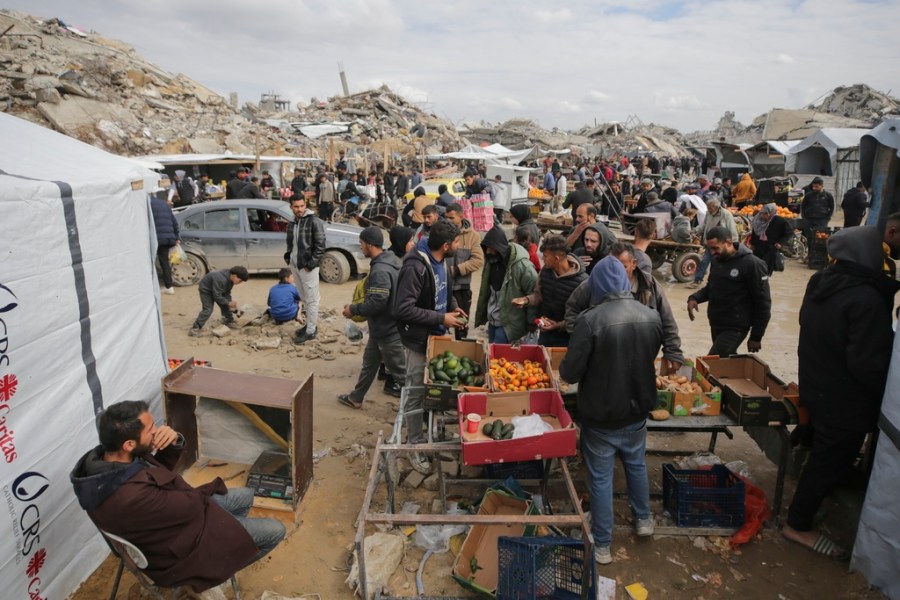
President Trump’s claim that the Gaza Strip cannot be reconstructed without removing its inhabitants flies in the face of history. Countless cities in Europe and Japan were destroyed during World War II, but they were rebuilt, and their inhabitants were at the center of the reconstruction.
But there are no recent examples, as far as I can ascertain, where inhabitants were removed wholesale and transferred elsewhere as outsiders took over the destroyed areas.
There have been small scale removals of people for the sake of urban renewal in the United States in the 1950s and 1960s — for example in New York, Chicago and Boston — but this approach was soon abandoned as both costly and destructive of existing communities.
There are important lessons in the post-World War II reconstructions of cities that appeared beyond help. It is uncertain at this point whether the U.S. will be part of the effort, given Trump’s preference for turning Gaza into a resort and the gutting of the USAID. But if Dresden and Hiroshima could be rebuilt, so can Gaza.
Both Dresden and Hiroshima were reconstructed around their inhabitants and with their efforts. And they were reconstructed by countries utterly impoverished by war, without the benefits of today’s advanced technology.
Dresden’s population in 1945 was estimated at approximately 630,000, including some 100,000 refugees. Intense bombing on Feb. 13 and 14 of 1945 killed tens of thousands and possibly up to 300,000 — the number is impossible to determine with any precision because bodies were incinerated by the fire storm and many people in the city were unregistered refugees.
Some 75,000 of the 220,000 houses were destroyed, with an additional 19,000 severely damaged. Yet most people stayed on and rebuilt. The population stood at 494,000 in 1950, despite the massive number of deaths caused by the firestorm and, presumably, the return of many refugees to their homes once the war ended.
Who rebuilt Dresden? The first steps were taken by the surviving citizens, removing rubble by hand in order to carve out space to live. Pictures from the early post-war period in Dresden are reminiscent of those coming from Gaza now, with people camping out in severely destroyed buildings and riding trolleys advancing precariously through canyons of ruins, on tracks ordinary people had cleared or rebuilt.
Later, they also lived in infamous metal structures provided by the government. Finally, the East German government tried to redevelop Dresden into a modern city of high-rise apartment complexes and later more human-sized prefabricated buildings. The last stage of the reconstruction took place after Germany’s reunification when determined citizens, with the help of a prosperous government, raised funds to restore major churches and palaces. Life in the city was undoubtedly quite grim for years after the war, but in the end Dresden was reborn.
Another example worth considering is Hiroshima. The city was leveled, with 70 percent of the buildings destroyed, up to 70,000 killed in the initial blast and an additional 140,000 dead by the year’s end. The population dropped to 137,000 but by 1955 it was back to the pre-war levels of 344,000 and kept growing from there.
The rebuilding of Hiroshima was a more complex affair, because of U.S. and international support. But the initial phase was similar to Dresden’s. In the absence of organized support, citizens acted for themselves, legally or not. They simply had to survive. Local efforts managed to get trolleys running again within three days. Black markets sprouted up almost as rapidly and probably contributed in a major way to people’s survival.
The Japanese government contributed to the reconstruction, but its funding was limited by the overall economic situation at the end of the war. The Red Cross delivered some supplies and eventually the U.S. government also contributed. Much international effort went to the development of memorials and centers devoted to promoting peace. But citizens devoted their effort to developing shelter, services and sources of food in the devastated city. Eventually, Hiroshima became a thriving city for its growing population as well as a memorial to the terrible events of 1945.
What do these two examples teach us? First, Gazans, if given a chance, will bring the strip back to life, as they started doing the moment the bombing stopped, walking back to their destroyed homes and camping out in the ruins. Second, external help can speed up the process and bring immediate relief, as long as it supports what people are trying to do rather than sidelining them.
People should not have to dig out ruins by hand when machines can do it more efficiently, but machines should not be used to arbitrarily clear out land completely so outsiders can superimpose building plans that follow some urban planners’ concept. The international community needs to ensure that the ceasefire continues, and with it the flow of food, medical aid and construction materials.
Gazans themselves are the key to reconstruction. This is not a starry-eyed vision of people lifting themselves by their own bootstraps, but a realistic assessment that international aid will fall far short of the need. Gazans need plenty of help urgently, but they do not need a takeover, whether benevolent or hostile. They have a tough road ahead of them, but they have no alternative.
Marina Ottaway is Middle East fellow at the Woodrow Wilson Center.

